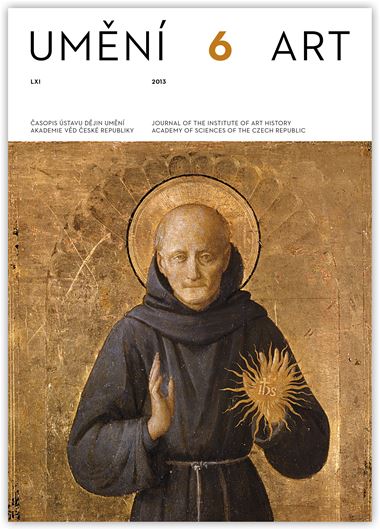Richard Němec
Architektura a ideologie. Výchovné instituce Adolfa Hitlera v protektorátu Čechy a Morava a v Říšské župě Sudety
This article examines the architecture of the Nazi regime in two occupied cities of Czechoslovakia, Praha/Prag and Jihlava/Iglau (the latter being one of the traditionally German-speaking islands in Bohemia), and focuses specifically on the process by which Hitler youth organisations (Hitlerjugend) for the ‘education’ and indoctrination of youth were or were not successfully established in these cities. As a comparison, he takes the political-administrative centres of the Sudeten Reichsgau, Ústí/Aussig, Opava/Troppau, Karlovy Vary/Karlsbad and Liberec/Reichenberg. Drawing on Czech and German archive materials, the extensive body of modern analytical literature, and propagandist literature from the period studied, the author examines the extent to which architecture served as a projection screen for Fascist propaganda in the Occupied or annexed territories. He describes the role played by the Reichsstelle für Raumordnung and shows how the Reich’s propagandist objectives came to be reflected in a highly specific typology and stylistic lexicon for the architecture of Hitler youth hostels and homes. He examines the process by which these organisations were forcibly implanted into the space of occupied Czechoslovakia (and the Sudetenland), a topic that has not yet been addressed in art history. The building projects developed for the Protectorate (published here for the first time) and managed by the Reich’s Hitler Youth Leadership in Berlin (Kulturamt, Reichsjugendführung, RJF, Abteilung HJ) reveal the ties that existed between the construction authorities in the Reich and the Protectorate, including the Planning Committee for the City of Prague. The author asks how many German and Czech architects participated for their own profit in the Nazi system, and for future research raises the hitherto taboo question of guilt and collaboration with the Nazis and the perception of this phenomenon in art history, i.e. the measure of active cooperation of not just German but also Czech architects who contributed to the planning and implementation of projects and thereby unequivocally had a hand in consolidating the totalitarian regime and de facto in the forced ‘Germanification’ of their own people under occupation.
Full-text in the Digital Library of the Czech Academy of Sciences:
https://kramerius.lib.cas.cz/uuid/uuid:fc7430af-82d2-45e1-8580-1ccef0837e11
< back

